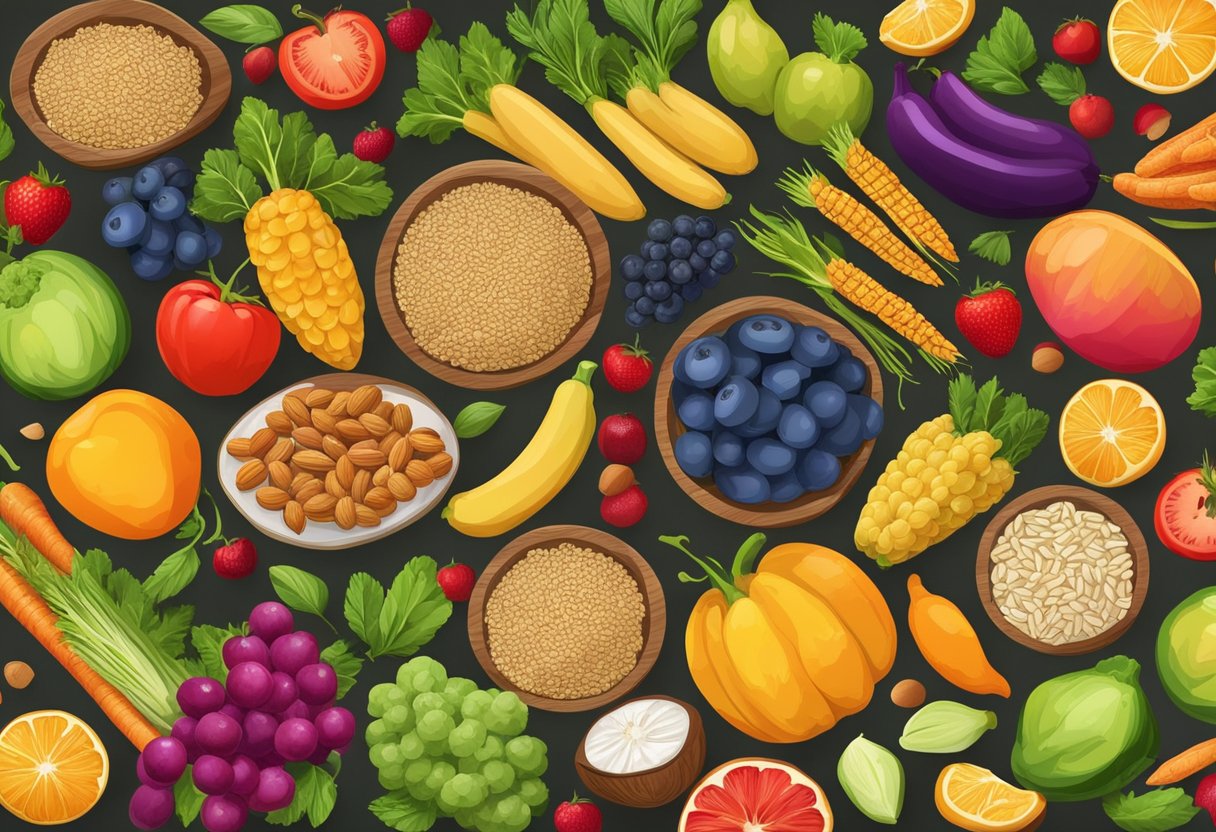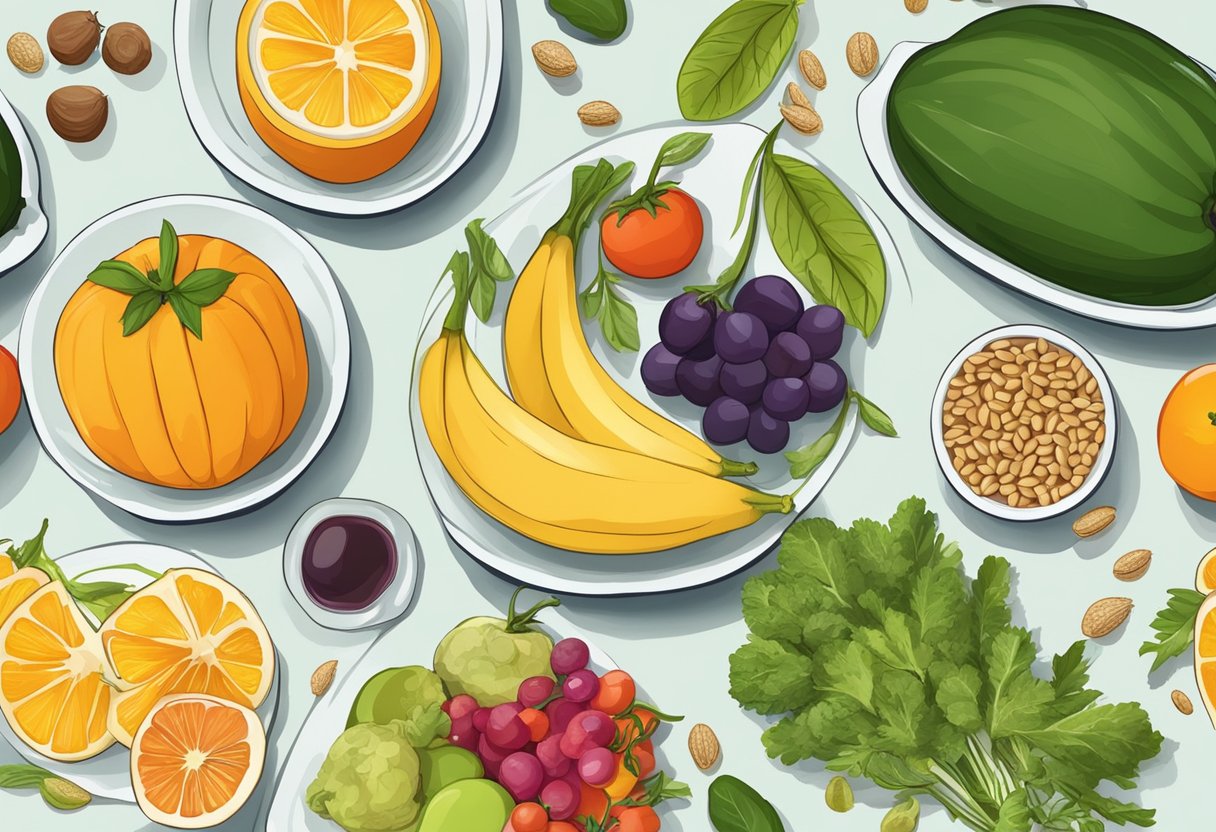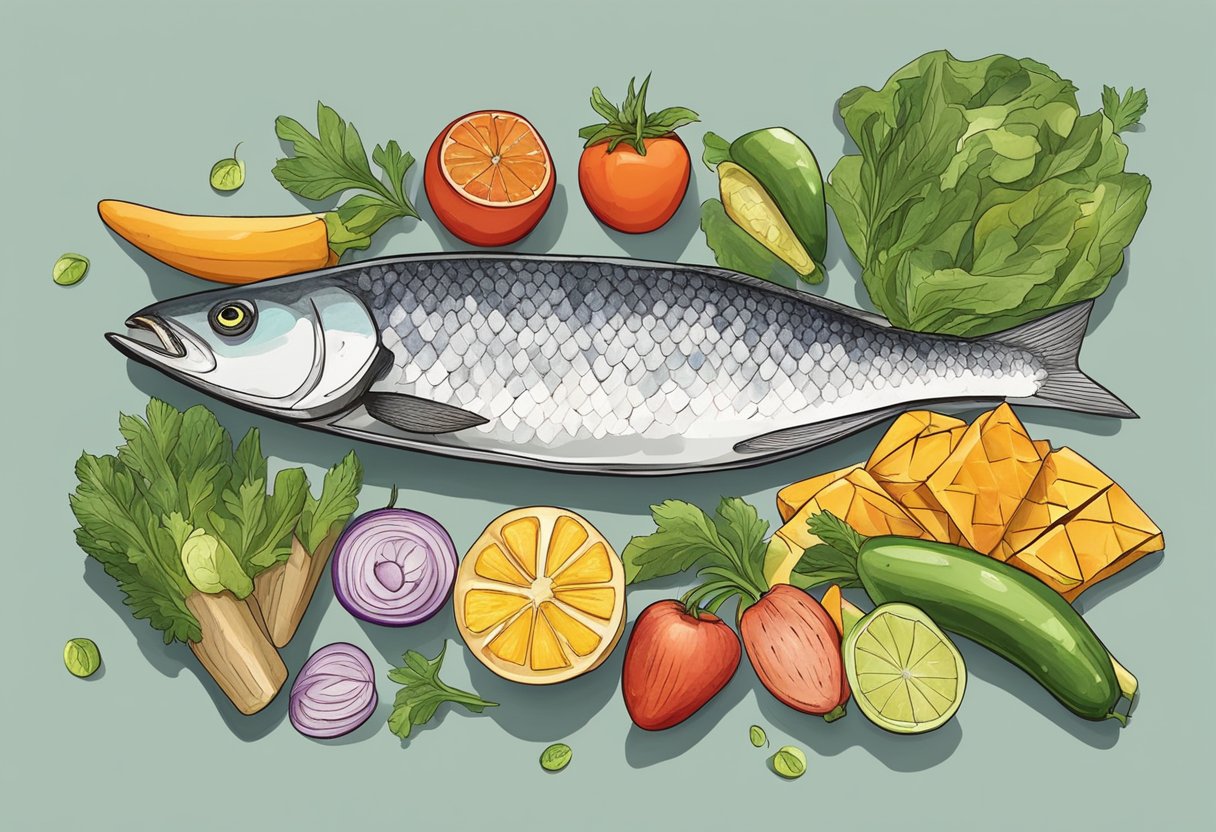Embracing a gluten-free Mediterranean diet offers a flavorful and healthy way to eat, especially for those with celiac disease or gluten sensitivity. Rooted in the patterns of eating specific to the regions surrounding the Mediterranean Sea, this diet focuses on plant-based foods, healthy fats, whole grains, and a diversity of proteins, while naturally eliminating gluten-containing grains. Seasonal eating on such a diet accentuates the fresh and varied produce available throughout the year, aligning with nutritional needs and environmental sustainability.

Seasonal eating strategies on a gluten-free Mediterranean diet encourage consuming fruits, vegetables, legumes, nuts, seeds, fish, and lean meats that are available at their peak harvest time. This not only ensures maximum flavor and nutritional content but also supports local agriculture and reduces the carbon footprint associated with food transport. Meanwhile, careful planning around meal ideas that are both gluten-free and Mediterranean can ensure a well-rounded approach to nutrition and health, providing the benefits of a diversified, high-fiber, and nutrient-dense diet.
Key Takeaways
- A gluten-free Mediterranean diet is a healthful choice for individuals with celiac disease or gluten sensitivity.
- Seasonal eating enhances the diet’s benefits by utilizing fresh, local produce at peak quality and nutrition.
- Careful meal planning is essential to maintain a balanced gluten-free Mediterranean diet.
Table of Contents
Understanding Gluten-Free Eating

Adopting a gluten-free diet is essential for individuals with celiac disease, as it involves eliminating gluten, a protein found in wheat and other grains. Understanding the diet’s essentials, recognizing gluten sources, and appreciating the benefits are crucial steps for maintaining one’s health and well-being.
Essentials of a Gluten-Free Diet
The core of a gluten-free diet is the total exclusion of gluten. Gluten is a protein composite present in grains such as wheat, barley, and rye. Individuals with celiac disease need to substitute traditional grains with gluten-free alternatives like rice, corn, quinoa, and gluten-free oats. Cross-contamination must be avoided, making safe food handling a top priority.
-
- Fruits and vegetables
- Lean proteins (fish, poultry)
- Gluten-free grains (quinoa, rice)
- Legumes
- Nuts and seeds
- Dairy (with caution for lactose intolerance)
-
- All forms of wheat (bread, pasta)
- Rye
- Barley
- Malt
- Brewer’s yeast
- Anything with “gluten” on the label
Recognizing Gluten Sources
Gluten sources aren’t limited to the obvious breads and pastas. It hides in many processed foods, seasonings, and even non-food items like medications and lip balm. Careful label reading is pivotal — one should look for terms indicating gluten or wheat-based ingredients. Gluten can also lurk in foods labeled as “natural flavorings” or “modified food starch.”
Benefits of Being Gluten-Free
For those with celiac disease, following a gluten-free diet brings significant health benefits. It can prevent the potential damage to the small intestine and alleviate symptoms like abdominal pain and bloating. Moreover, switching to a gluten-free Mediterranean diet can contribute to increased intake of nutrient-dense foods leading to an overall healthier lifestyle.
Basics of the Mediterranean Diet

The Mediterranean Diet emphasizes whole foods, rich in nutrients, and the right balance of healthy fats, which are key for maintaining a healthy lifestyle.
Core Components of the Mediterranean Diet
The Mediterranean Diet is a culinary reflection of the regions surrounding the Mediterranean Sea, where people traditionally consumed a variety of legumes, vegetables, fruits, whole grains, and nuts. Central to the diet is the use of olive oil, a source of monounsaturated fats, known for their health benefits. Fish is often preferred over red meat and consumed a few times per week for its omega-3 fatty acids. For those adhering to a gluten-free regimen, traditional grains can be replaced with gluten-free options such as quinoa and buckwheat.
- Main Foods:
- Vegetables: Tomatoes, peppers, onions, eggplants, zucchini, spinach
- Fruits: Apples, oranges, peaches, pears, and also berries
- Nuts and Seeds: Almonds, walnuts, sunflower seeds
- Legumes: Lentils, chickpeas, beans
- Whole Grains: Gluten-free options like quinoa, millet, and brown rice
- Healthy Fats: Primarily olive oil, avocados
- Protein: Predominantly fish and seafood, poultry in moderation
Mediterranean Diet and Heart Health
Researchers attribute the Mediterranean Diet with significant heart health benefits, largely due to its emphasis on heart-healthy fats found in olive oil, nuts, and fish. High in antioxidants and fiber from fruits and vegetables, the diet helps in reducing the occurrence of heart disease by lowering blood pressure and cholesterol levels. It is important for individuals on a gluten-free diet to ensure the grains they consume are not only whole but also free from gluten-containing ingredients.
Incorporating Healthy Fats
Healthy fats are a cornerstone of the Mediterranean Diet. Predominantly sourced from olive oil, they are used abundantly for cooking and dressing foods. Other sources include nuts like almonds and walnuts, as well as seeds, all of which are naturally gluten-free and full of essential fatty acids. Seafood, particularly fish, provides another critical aspect of these fats in the form of omega-3s, supporting overall heart health and reducing inflammation.
Combining Gluten-Free with Mediterranean

Merging a gluten-free lifestyle with the Mediterranean diet requires careful replacement of traditional grains with gluten-free alternatives. This transition emphasizes a balanced diet rich in fruits, vegetables, lean proteins, and gluten-free whole grains.
Key Adjustments for Gluten-Free Compliance
The core change to accommodate a gluten-free diet within Mediterranean habits is the substitution of traditional grains with gluten-free options. Instead of barley, wheat, or rye, individuals should opt for gluten-free whole grains like rice, quinoa, corn, and buckwheat. These grains maintain the high fiber and nutrient profiles consistent with the Mediterranean diet.
Gluten-Free Mediterranean Ingredients
Gluten-free Mediterranean cooking hinges on the use of fresh, unprocessed ingredients. Key staples include:
- Grains: Choose gluten-free whole grains such as rice, quinoa, corn, and buckwheat.
- Vegetables and Fruits: Incorporate a variety of colorful produce.
- Proteins: Favor seafood, poultry, and legumes.
- Fats: Utilize healthy fats like olive oil and nuts.
Balancing Macronutrients
When combining gluten-free practices with the Mediterranean diet, it’s crucial for individuals to balance their macronutrients:
- Carbohydrates: Derived primarily from gluten-free grains and legumes.
- Proteins: Sourced from fish, poultry, and plant-based proteins like lentils.
- Fats: Obtained from sources like olives, nuts, seeds, and avocados.
By carefully selecting ingredients and adhering to these guidelines, individuals can enjoy a nutritious gluten-free Mediterranean diet that supports overall health and well-being.
Seasonal Eating Strategies

Adopting seasonal eating strategies within a gluten-free Mediterranean diet can optimize nutrition while honoring the natural production cycles. It involves selecting and enjoying foods that are naturally harvested at their peak of freshness.
Benefits of Eating Seasonally
Seasonal consumption has its perks, not just for the individual but also for the community and environment. Vegetables and fruits picked during their natural growing seasons contain more nutrients and flavors compared to those harvested out of season and transported long distances. They not only taste better but also offer a higher concentration of vitamins and antioxidants. Eating seasonally supports local farmers and reduces the carbon footprint, playing a part in global sustainability efforts.
Seasonal Food Selection
When selecting seasonal foods, one should look for fresh, locally-sourced produce. Here’s a guide on what to choose throughout the year:
- Spring: Asparagus, strawberries, and artichokes are excellent choices. Incorporate plenty of fresh herbs like parsley and dill to enhance the flavors of dishes without the need for gluten-containing additives.
- Summer: Opt for a vibrant variety of fruit, such as berries, peaches, and melons. Vegetables like zucchini, tomatoes, and bell peppers are also in full swing.
- Autumn: Foods like apples, pears, and squashes can be staples. Seeds and nuts, including almonds and pumpkin seeds, are ideal for adding crunch and nutrition to meals.
- Winter: Root vegetables, like sweet potatoes and turnips, provide substantial energy and comfort. Citrus fruits offer a burst of flavor and vitamin C.
By incorporating these strategies into a gluten-free Mediterranean diet, one can enjoy a diverse range of foods that align with both health goals and environmental consciousness.
Diet Planning and Meal Ideas

Successful adherence to a gluten-free Mediterranean diet depends on thoughtful meal planning and the utilization of seasonal ingredients. These plans and ideas can make meals more enjoyable and maximize the nutritional benefits.
Creating a Gluten-Free Mediterranean Meal Plan
When crafting a gluten-free Mediterranean meal plan, one aims to balance proteins, fats, and carbohydrates while excluding gluten-containing grains. Breakfast options might include Greek yogurt with honey and walnuts, while lunches could favor quinoa salads with mixed vegetables. For dinner, grilled fish or lean meats with a variety of side vegetables are ideal. Each meal should incorporate olive oil as a healthy fat source. Individuals should plan their meals weekly to include seasonal fruits and vegetables, ensuring variety and nutrient density.
Gluten-Free Mediterranean Recipes
Gluten-free Mediterranean recipes focus on whole foods such as fruits, vegetables, legumes, nuts, seeds, fish, and lean meats. Breakfast recipes could feature shakshuka, a dish of eggs poached in a sauce of tomatoes and peppers. Lunch may include lentil salads drizzled with a lemon and olive oil dressing. For dinner, one could prepare a baked chicken with herbs alongside roasted vegetables like squash that are in season. Dishes are often seasoned with a medley of gluten-free herbs and spices to enhance flavor without adding gluten.
Seasonal Meal Inspiration
Incorporating seasonal ingredients into a gluten-free Mediterranean diet not only supports local agriculture but also ensures that meals are at their peak of nutrition and flavor. A summer lunch might feature a salad topped with ripe tomatoes and cucumbers, while a hearty fall dinner could highlight roasted root vegetables with baked cod. In winter, one could start with a breakfast of warm polenta topped with sautéed kale and a poached egg. Spring offers an abundance of fresh greens perfect for salads and wraps, showcasing the cycle of eating with the seasons.
Nutrition and Health Considerations

The gluten-free Mediterranean diet merges the benefits of plant-based eating with a gluten-free approach, providing a rich array of nutrients and health advantages. This diet not only supports weight management but also caters to the nutritional needs of those with celiac disease and gluten sensitivities.
Nutritional Profile of the Gluten-Free Mediterranean Diet
Focusing on the nutritional profile, the gluten-free Mediterranean diet emphasizes a high intake of fruits, vegetables, legumes, and healthy fats such as olive oil, all abundant in essential vitamins and minerals. The diet is naturally rich in fiber, which aids digestion and can contribute to weight loss. Protein sources include seafood and poultry, consumed in moderation, ensuring a balanced intake of essential amino acids.
Managing Health Conditions with Diet
In terms of managing health conditions, adhering to a gluten-free Mediterranean diet can be beneficial for individuals with type 2 diabetes due to its low glycemic load. The diet’s health benefits extend to a reduced risk of chronic illnesses such as stroke, Alzheimer’s disease, and certain forms of cancer, thanks to its focus on whole foods and antioxidants.
Advice from Health Professionals
Registered dietitians commonly provide advice on maintaining optimal health while following this diet. They underscore the importance of a diverse intake of foods to secure all necessary nutrients, advising against relying too heavily on processed gluten-free products, which can be lower in nutrients and higher in added sugars and fats.
Lifestyle Integration

Integrating a gluten-free Mediterranean diet into daily living should focus on embracing healthy, sustainable habits and acknowledging budget and cultural influences.
Making Sustainable Dietary Changes
They should start by gradually incorporating Mediterranean staples such as olive oil, seafood, and a variety of fruits and vegetables into their meals, while ensuring these items are gluten-free. It is important to focus on the versatility of naturally gluten-free grains like quinoa and rice. Paring these grains with seasonal produce not only enhances their diet but also reinforces a sustainable approach to eating.
Eating Gluten-Free Mediterranean on a Budget
One can maintain a budget-friendly gluten-free Mediterranean lifestyle by purchasing local, in-season produce, which is often more affordable and fresher. They should also consider buying legumes and nuts in bulk; these can serve as cost-effective sources of protein and other nutrients, vital for a balanced gluten-free diet.
Cultural Aspects of the Mediterranean Diet
They should immerse themselves in the cultural aspects of Mediterranean eating by exploring the traditional cuisines of countries like Italy, where the diet emphasizes fresh, whole foods and community-based meal experiences. This isn’t just about the food they consume, but how they engage with it – sharing meals with family and friends plays a vital role in this lifestyle.
Food Preparation Techniques

Successful adherence to a gluten-free Mediterranean diet requires an understanding of both gluten-free cooking methods and authentic Mediterranean cooking styles. These approaches focus on maintaining the integrity of ingredients while optimizing the retention of nutrients.
Gluten-Free Cooking Methods
One can employ several gluten-free cooking methods that are both simple and effective in retaining the nutritious quality of food. Steaming vegetables, for instance, preserves vitamins and minerals without the need for gluten-containing products. Baking with gluten-free flours like almond or chickpea flour helps provide structure to breads and pastries, ensuring that they don’t just replicate traditional tastes but also offer nutritional benefits.
- Steaming: Retains most nutrients in vegetables without gluten contact.
- Baking: Uses gluten-free flours to create nutrient-rich breads and other baked goods.
Mediterranean Cooking Styles
Mediterranean cooking styles emphasize the use of fresh, whole ingredients and simple cooking techniques to enhance flavor without relying on heavy sauces or seasonings. Grilling fish and seafood highlight natural flavors while maximizing their omega-3 fatty acids. Slow roasting vegetables with a drizzle of olive oil not only concentrates their flavor but also helps maintain their healthful properties.
- Grilling: Enhances the natural taste of fish and preserves heart-healthy fats.
- Roasting: Concentrates vegetable flavors and maintains nutritional content with healthy fats like olive oil.
Frequently Asked Questions

Navigating a gluten-free Mediterranean diet throughout the different seasons can pose some challenges. Here, one can find answers to common questions about resources, meal planning, and overcoming the complexities of incorporating seasonal foods into a gluten-free Mediterranean lifestyle.
What are some recommended gluten-free Mediterranean diet cookbooks?
Several cookbooks cater specifically to the gluten-free Mediterranean diet, among which “The Complete Mediterranean Cookbook” by America’s Test Kitchen is a notable choice. It offers a wide range of gluten-free recipes adapted from traditional Mediterranean cuisine.
Where can I find seasonal recipes suitable for a gluten-free Mediterranean diet?
Websites like Eat! Gluten-Free provide a collection of gluten-free Mediterranean recipes tailored to seasonal availability. These resources help maintain variety in the diet while using fresh, in-season ingredients.
How can I create a meal plan that accommodates seasonal eating on a gluten-free Mediterranean diet?
Creating a meal plan that accommodates seasonal eating can be aided by resources such as BIDMC of Boston, which outlines how to integrate various food groups such as fresh produce, whole grains, and lean proteins into a gluten-free Mediterranean diet.
Is there a comprehensive shopping list available for those on a gluten-free Mediterranean diet?
A comprehensive shopping list for this specific diet can be found on websites dedicated to gluten-free living. These lists typically include naturally gluten-free Mediterranean staples like fruits, vegetables, legumes, nuts, seeds, herbs, spices, and healthy fats such as olive oil and avocado.
What breakfast options are available for someone following a gluten-free Mediterranean diet?
For breakfast, those on a gluten-free Mediterranean diet might opt for dishes like a quinoa breakfast bowl with mixed berries and nuts or an omelette with spinach, tomatoes, and feta cheese. This ensures a protein-rich start to the day without the inclusion of gluten.
Are there any gluten-free and dairy-free Mediterranean diet recipe resources?
For individuals requiring both a gluten-free and dairy-free diet, resources such as Celiac Disease Foundation’s meal plans can offer guidance and recipes that exclude both gluten and dairy while still embracing the flavors of the Mediterranean.



